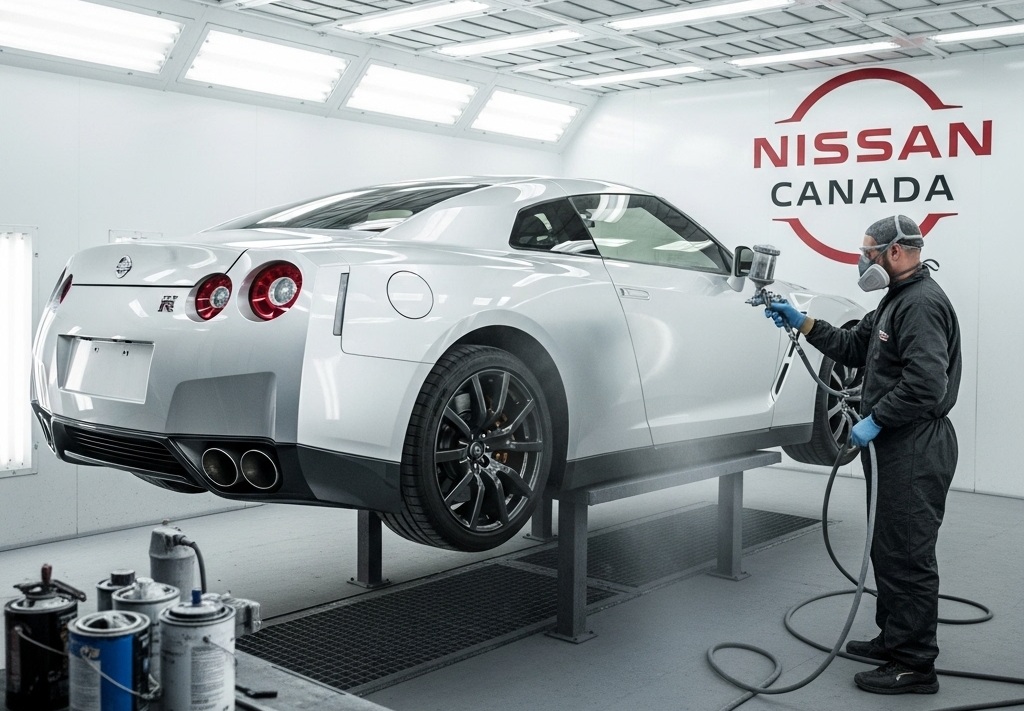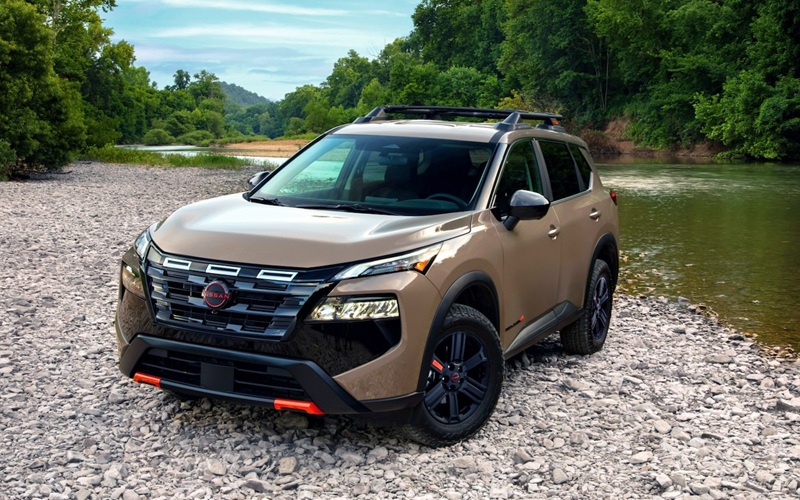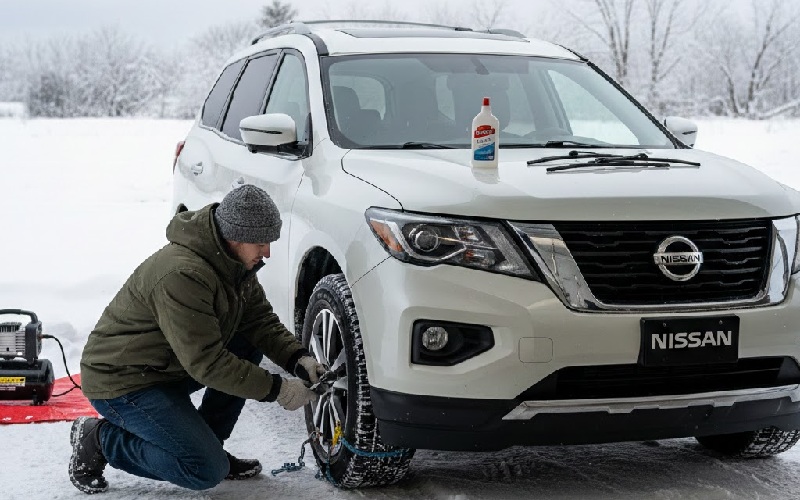Professional Vehicle Painting: Art and Science of The Process
Vehicle painting represents one of the most transformative services available for automobile owners. Whether restoring a weathered finish, repairing damage, or simply refreshing a vehicle’s appearance, professional painting services combine technical expertise, artistic skill, and cutting-edge materials to deliver results that protect and beautify your investment. The Professional Vehicle Painting Process A quality vehicle painting […]
Vehicle painting represents one of the most transformative services available for automobile owners. Whether restoring a weathered finish, repairing damage, or simply refreshing a vehicle’s appearance, professional painting services combine technical expertise, artistic skill, and cutting-edge materials to deliver results that protect and beautify your investment.

The Professional Vehicle Painting Process
A quality vehicle painting service follows a meticulous, multi-stage process that ensures durability, appearance, and longevity. Understanding these stages helps vehicle owners appreciate the complexity involved and make informed decisions about their vehicle’s care.
Initial Assessment and Preparation
The professional vehicle painting journey begins with a thorough assessment of the vehicle’s condition. Technicians examine the existing paint, identify damage areas, and develop a customized approach. This critical first step determines the extent of preparation required, which typically includes:
- Thorough cleaning and degreasing to remove contaminants that could affect paint adhesion
- Removal of rust, dents, and surface imperfections
- Careful masking of areas not being painted, including windows, trim, and mechanical components
- Sanding the surface in progressive stages, often starting with coarse grit (60-80) and finishing with fine grit (320-400)
Proper preparation represents approximately 70% of the total work in a quality paint job. Even the finest paint applied to a poorly prepared surface will yield disappointing results.
Priming Stage
After preparation, vehicles receive primer application, which serves multiple purposes:
- Creates a uniform surface for paint adhesion
- Seals the underlying materials
- Prevents rust and corrosion
- Enhances the true colour appearance of the topcoat
Most professional services apply one to three coats of primer, allowing proper drying time between applications. The primed surface then undergoes another round of fine sanding to create the perfect foundation for paint application.
Paint Application
This professional vehicle painting stage typically involves multiple layers applied with specialized equipment:
- Basecoat: This provides the actual colour and requires multiple thin, even layers to achieve the desired shade and coverage. Professional painters use high-pressure spray guns in climate-controlled painting booths to ensure consistent application without contaminants.
- Mid-coat (when applicable): Vehicles with metallic or pearl finishes receive a mid-coat layer that creates depth, dimension, and visual effects. This specialized layer helps achieve accurate colour matching for factory finishes.
- Clearcoat: The final protective layer that provides gloss, depth, and protection from UV damage and environmental hazards. Professional services typically apply 2-3 layers of clearcoat, with options including high-gloss, matte, or specialty finishes.
Between each stage, appropriate drying and curing time is essential. Rush this process, and the entire job may be compromised.
Finishing Touches
The painting process concludes with meticulous finishing work:
- Wet sanding with ultra-fine grit paper (1000-2000) to remove any imperfections
- Machine buffing and polishing to restore maximum gloss and depth
- Final detailing and inspection to ensure perfection from every angle
Quality Considerations in Professional Vehicle Painting
Several factors distinguish exceptional vehicle painting services:
- Equipment Quality: Professional shops invest in climate-controlled spray booths, advanced spraying equipment, and proper ventilation systems that ensure consistent results regardless of external conditions.
- Material Selection: Premium services use manufacturer-approved paints and materials designed for specific vehicle types. These products offer superior adhesion, UV protection, and durability compared to generic alternatives.
- Technician Expertise: Skilled painters combine technical knowledge with artistic ability, understanding how different materials interact and how to achieve perfect colour matching—particularly challenging with metallic and pearl finishes.
- Comprehensive Warranty: Quality painting services stand behind their work with solid warranty protection, typically covering issues like peeling, cracking, or colour inconsistencies.
Environmental Considerations
Modern professional vehicle painting has evolved to address environmental concerns through:
- Low-VOC and water-based paint options that reduce harmful emissions
- Advanced filtration systems that capture overspray and particulates
- Efficient application methods that minimize waste and resource usage
These approaches benefit both the environment and the health of technicians while still delivering exceptional results.
Things Most People Don’t Know About Professional Vehicle Painting Services
- Professional paint booths maintain precisely controlled temperature and humidity levels—typically 20-24°C with 65-70% humidity—as variations as small as 5% can significantly impact paint application and finish quality
- A complete professional painting process requires between 40-60 hours of labour, with only about 20% of that time spent actually applying paint
- Modern automotive clearcoats can contain ceramic particles that increase scratch resistance by up to 60% while providing enhanced UV protection compared to traditional formulations
- Colour matching technologies now use spectrophotometers that measure wavelengths of light to create paint formulations accurate to within 0.001% of the original factory colour
- The same vehicle painted in different facilities may appear slightly different under certain lighting conditions due to differences in application technique, material formulation, and curing methods, even when using identical colour codes
Frequently Asked Questions About Professional Vehicle Painting Services
How long does a complete professional painting service typically take?
- A quality full-vehicle painting service typically requires 7-14 days, depending on the extent of preparation required, the type of paint system used, and necessary curing time between stages.
Will my newly painted vehicle match the original factory colour exactly?
- Professional services use computerized colour-matching technology to achieve results typically within 97-99% of factory original. However, slight variations may occur due to differences in application techniques and the natural aging of surrounding panels.
How soon after painting can I wash my vehicle?
- While paint may feel dry within hours, complete curing takes much longer. Most professionals recommend waiting at least 30 days before washing, and 60-90 days before applying wax or ceramic coatings to allow complete hardening of the clearcoat.
Is it necessary to paint the entire vehicle if only one panel is damaged?
- For optimal colour matching, adjacent panels often require painting, as even factory original panels of the same colour code may show slight variations due to weathering and sun exposure. Skilled painters can sometimes blend new paint into existing finishes for smaller repairs.
How can I maintain my new paint job?
- Regular washing with pH-neutral soap, avoiding automatic car washes for the first 90 days, garage storage when possible, and application of quality protection products will extend the life and appearance of your paint.
What causes orange peel texture in paint finishes?
- Orange peel—a dimpled appearance similar to citrus skin—typically results from improper paint mixture, incorrect spray gun settings, poor application technique, or unsuitable environmental conditions during application.
Can my vehicle be returned to its original colour?
- Yes, though changing to the original colour requires more extensive preparation, including painting areas not normally visible, such as door jamb areas, under the hood, and trunk areas, to avoid mismatched areas.
How long should a professional paint job last?
- With proper care, a quality paint job should maintain its appearance for 10-15 years, though environmental factors like intense sun exposure, winter road treatments, and storage conditions can significantly impact longevity.
Are there alternatives to complete repainting for minor issues?
- Yes, options include spot repairs, paint correction (compounding/polishing), vinyl wraps, or paintless dent repair for specific issues, often at lower cost than complete repainting.
What should I look for when evaluating a painting service’s quality?
- Examine previous work in direct sunlight, check for consistent colour across panels, inspect for dust particles or orange peel in the finish, and review their preparation process—as this stage determines the long-term quality more than any other factor.


